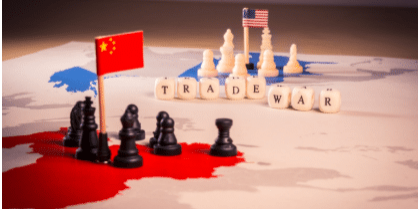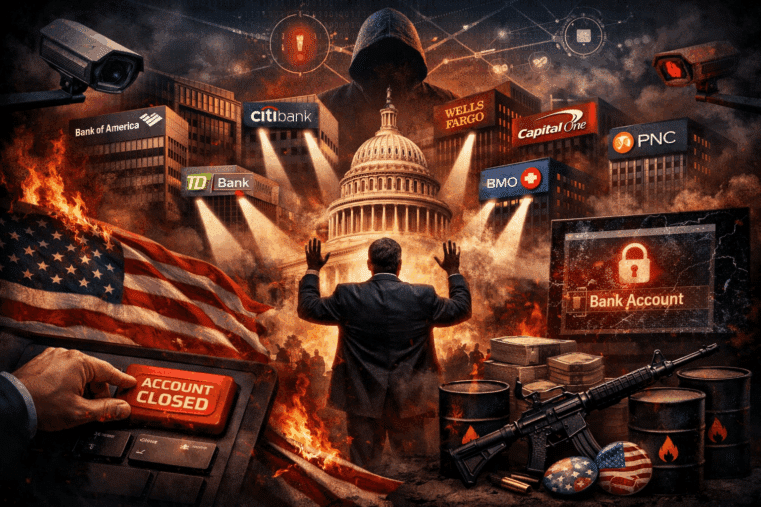
China’s Tariff War: The Battle for Global Economic Supremacy
The New Front in the U.S.-China Economic War
The financial world woke up to yet another round of economic warfare between the U.S. and China. Beijing’s latest salvo? Additional tariffs of up to 15% on American imports, including coal, liquefied natural gas (LNG), crude oil, and agricultural machinery, effective February 10.
This is no knee-jerk reaction. This is a calculated move by China’s leadership—a warning shot that they’re willing to play hardball. But what’s the real game here? Is this just a continuation of an old trade dispute, or are we witnessing the early stages of something far more profound—the dismantling of the U.S. dollar’s global dominance?
Economic Chess Moves: What Beijing is Really Doing
China isn’t simply responding to U.S. tariffs. It’s making moves to position itself as the new global economic powerhouse—one that no longer has to play by Washington’s rules.
Here’s what’s really happening behind the headlines:
- De-Dollarization in Action – China has been quietly moving away from dependence on the U.S. dollar for years. The BRICS alliance (Brazil, Russia, India, China, and South Africa) is pushing for alternative trade settlement mechanisms, including gold-backed transactions and central bank digital currencies (CBDCs). Could these tariffs be another strategic step toward fully uncoupling from the dollar-based trade system?
- Energy Power Play – By slapping a 15% tariff on U.S. energy exports like LNG and crude oil, China is signaling that it can—and will—diversify its energy supply. China has already secured long-term energy deals with Russia and the Middle East, ensuring that it isn’t reliant on American fossil fuels.
- Hitting Key U.S. Industries – Agricultural machinery, crude oil, and autos—these sectors form the backbone of the U.S. industrial economy. By targeting them, China is strategically applying pressure on the very industries that support America’s middle class and economic growth.
- Tech & Critical Minerals: The Silent Weapon – Perhaps the most telling move from China is its decision to impose export controls on critical minerals, including tungsten, tellurium, and molybdenum. These elements are essential for everything from semiconductors to military hardware. Washington may be playing checkers with tariffs, but Beijing is playing 3D chess by restricting access to materials that the U.S. cannot afford to lose.
The Bigger Picture: This Isn’t Just About Trade—It’s About Currency Wars
There’s a reason why this trade war isn’t cooling down—it’s about much more than tariffs. It’s about global financial control.
For decades, the U.S. has weaponized the dollar’s reserve status, using it as a tool to enforce economic compliance across the world. But China and its BRICS allies are making a bold play to end dollar hegemony—and America’s ability to print unlimited money without consequence.
China has already been accumulating record amounts of gold, backing its digital yuan with tangible assets. Meanwhile, Russia, Iran, and Saudi Arabia are exploring trade deals that completely bypass the dollar in favor of gold and other assets.
What happens when major economies stop settling trade in dollars? The U.S. loses its ability to sustain endless deficits, the Federal Reserve’s printing press becomes useless, and the American economy enters freefall. That’s the real war being fought here.
What Comes Next? The Path to an Economic Reset
So where is this all heading? Here’s my forecast:
- Expect More Retaliation – The U.S. will likely respond with even harsher tariffs or sanctions, further escalating the standoff. But the more Washington pushes, the more Beijing will accelerate its pivot away from the dollar.
- A Global Economic Realignment – The BRICS nations will double down on their efforts to establish an alternative trade system, backed by commodities and real assets instead of U.S. debt.
- The Dollar’s Weakening Grip – As more countries abandon the dollar in favor of gold-backed settlements and CBDCs, inflation will skyrocket at home, and the purchasing power of your savings will be destroyed.
How to Protect Yourself from the Coming Currency Crisis
Most people will be caught off guard when this system collapses. But you don’t have to be one of them.
Take Action Now:
- Diversify into Real Assets – Gold, silver, and tangible commodities are your best hedge against a collapsing dollar.
- Get Out of the Fiat Trap – Reduce exposure to dollar-based assets and debt-ridden financial institutions.
- Educate Yourself on Sound Money – The writing is on the wall. The world is moving toward a new monetary system, and those who understand it before the switch will be the ones who thrive.
If you want a free digital copy of "Seven Steps to Protect Your Bank Accounts," grab it here:
👉 https://offers.dedollarizenews.com/?utm_source=7steps_ebook&utm_medium=ebook&utm_campaign=gsi&utm_term=static&utm_content=mr_anderson
Prefer a hardcover copy of "The End of Banking as You Know It" for your library? Get it for just $19.95 (normally $49.95):
👉 https://offers.dedollarizenews.com/eotnews/book?utm_source=DedollarizeNews&utm_medium=article&utm_campaign=gsi&utm_term=static&utm_content=mr_anderson
The system is changing. The only question is—will you be ready?










